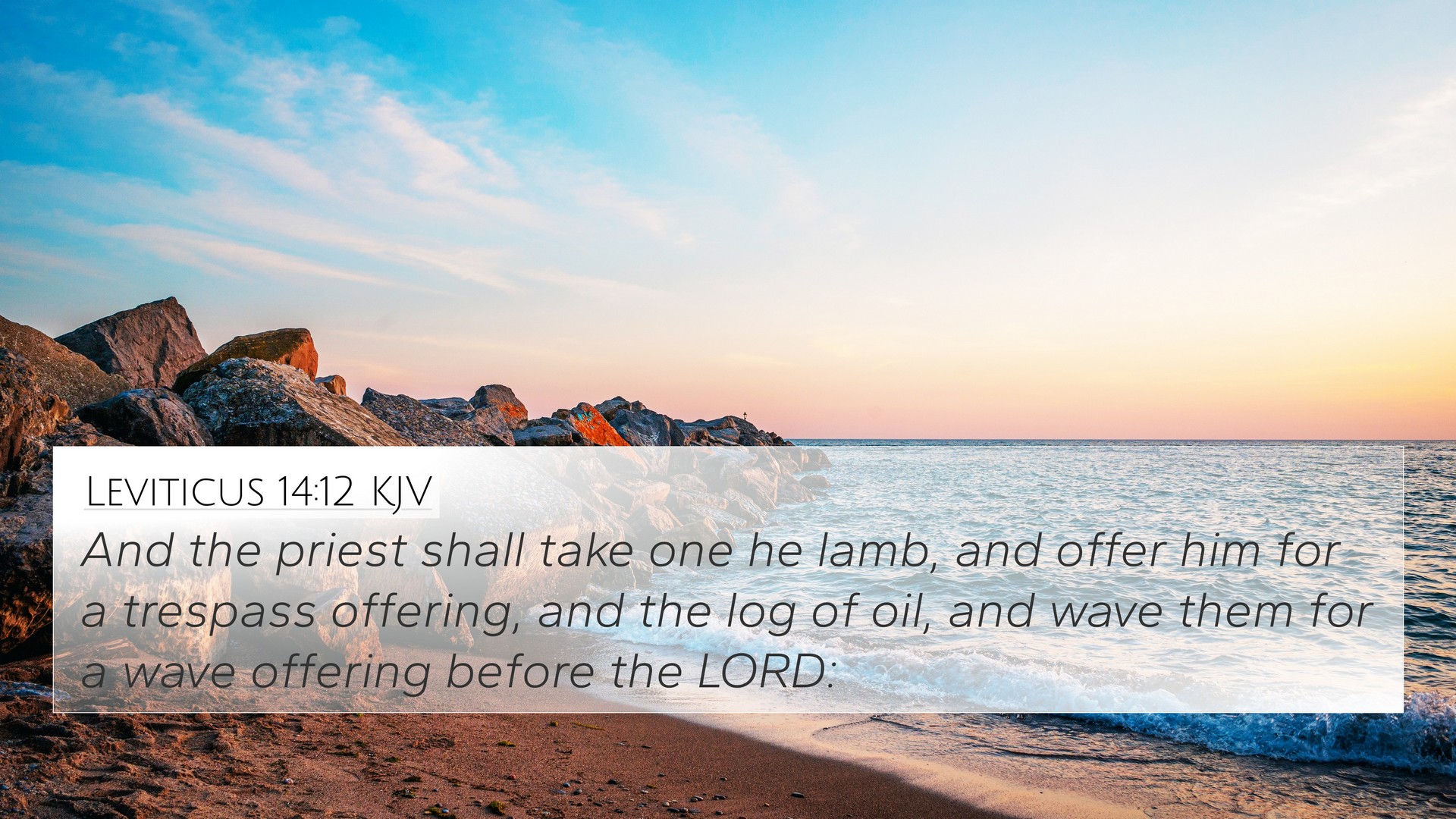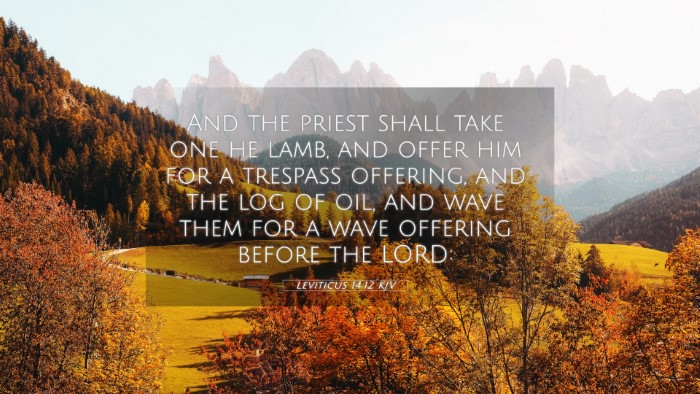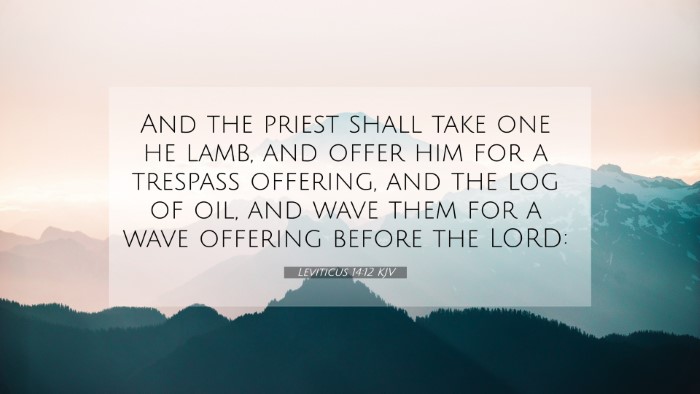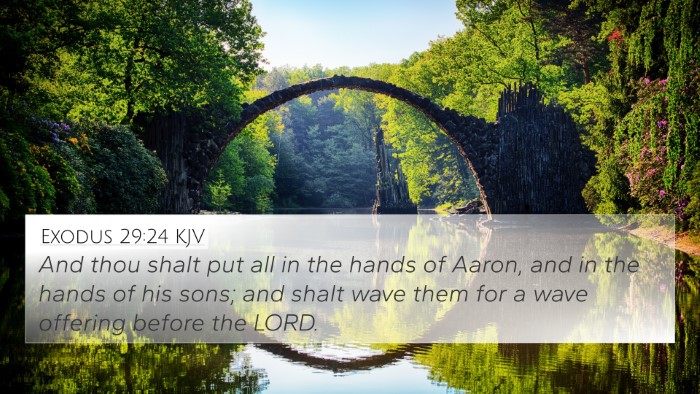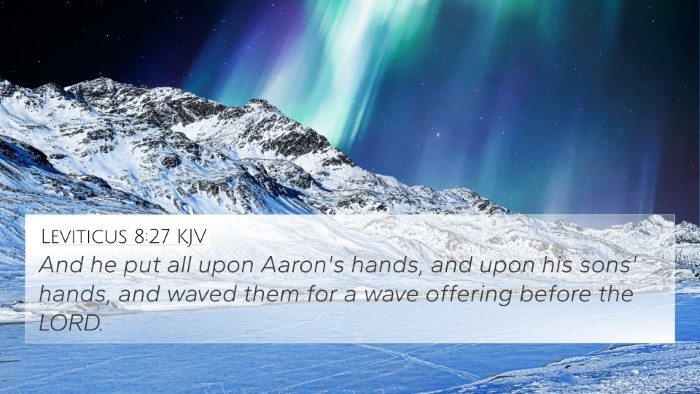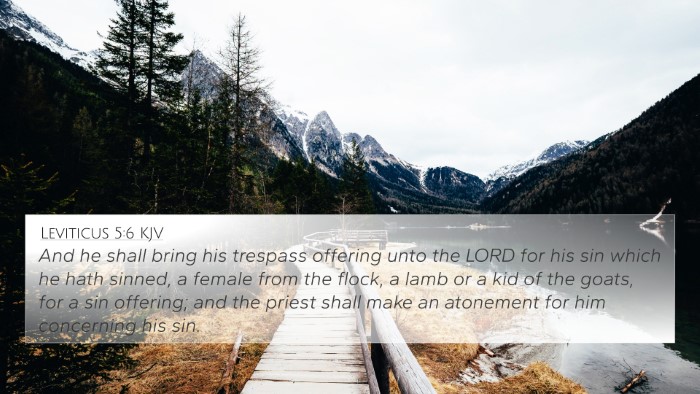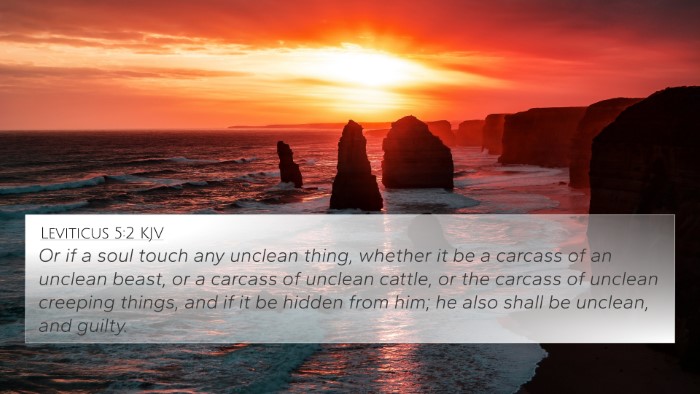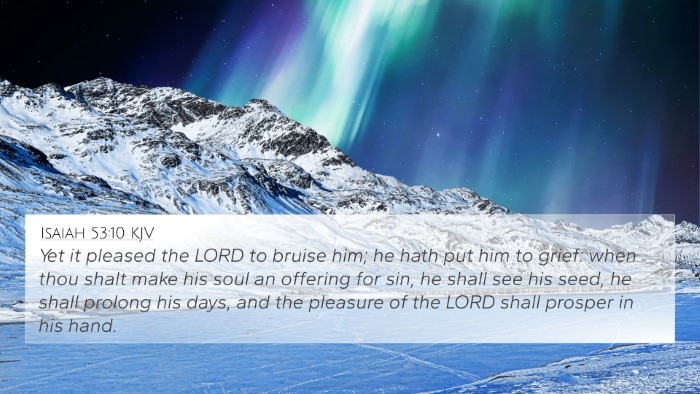Bible Verse Meaning: Leviticus 14:12
Leviticus 14:12 states, "And the priest shall take one he-lamb and offer him for a trespass offering, and the log of oil, and wave them for a wave offering before the LORD." This verse is significant in the context of the purification rituals prescribed for the Israelites, specifically concerning those who had been afflicted with leprosy or other skin diseases.
Contextual Background
The laws in Leviticus were designed to maintain ritual purity among the Israelites. The entire chapter 14 outlines the procedure for the cleansing of lepers, indicating the seriousness with which Israel was to handle diseases that impacted community worship and social relations. The priest plays a central role, representing God's authority and his means of reconciliation between the afflicted individual and the community.
Commentary Insights
-
Matthew Henry’s Commentary:
Henry emphasizes that the offering made by the priest stands as a prophetic symbol of Christ’s sacrifice. Just as the priest waved the offerings before the Lord, Christ was also presented before God as the sacrificial Lamb, offering purification for sin.
-
Albert Barnes’ Notes:
Barnes highlights the significance of the he-lamb and the log of oil in this ceremonial act. The he-lamb represents atonement, while the oil, often symbolic of the Holy Spirit, signifies anointing and healing. This twofold symbolism underscores the comprehensive nature of restoration—physical and spiritual.
-
Adam Clarke’s Commentary:
Clarke points out that the “trespass offering” indicates that sin has repercussions, not just between individuals but also in one's relationship with God. This ritualistic practice illustrates the broader biblical theme of sin and redemption, relevant throughout both Old and New Testaments.
Bible Cross References
Understanding Leviticus 14:12 is greatly enhanced by considering its cross-references throughout the Bible. Here are several key verses that relate to this text:
- Leviticus 4:6-7: Discusses the role of the priest in atonement.
- Hebrews 9:22: States that without the shedding of blood, there is no remission.
- 1 Peter 1:18-19: The precious blood of Christ as a lamb without blemish.
- Isaiah 53:5: Emphasizes Christ’s suffering and sacrifice for our iniquities.
- Romans 5:8: God’s love demonstrated through Christ’s death for sinners.
- Exodus 12:21-23: The Passover lamb as an early foreshadowing of Christ.
- John 1:29: John the Baptist identifies Jesus as the Lamb of God.
Thematic Connections
The themes presented in Leviticus 14:12 resonate through various parts of Scripture. Here are some thematic connections:
-
Atonement: The notion that offerings are required to make amends for transgressions against God.
-
Purification: The procedures for ritual cleanliness and its significance in approaching God.
-
Redemption: The broader narrative of redemption found throughout both the Old and New Testament.
Application Today
The principles illustrated by Leviticus 14:12 remain relevant today. It serves as a reminder of the cost of sin and the need for atonement, culminating in the ultimate sacrifice of Jesus Christ. Believers are called to examine their lives, acknowledge the presence of sin, and seek restoration through faith.
Tools for Bible Cross-Referencing
Understanding how various scriptures interconnect can be enhanced through the use of tools and methods in bible study, such as:
- Bible Concordance
- Bible Cross-Reference Guide
- Bible Reference Resources
- Cross-reference Bible Study Methods
Conclusion
Leviticus 14:12 serves as more than just an ancient ritualistic practice; it introduces themes of sacrifice, atonement, and healing that resonate through the entire biblical narrative. Through careful study and cross-referencing, believers can appreciate the interconnectedness of scriptures and the depth of God’s redemptive work throughout history.
